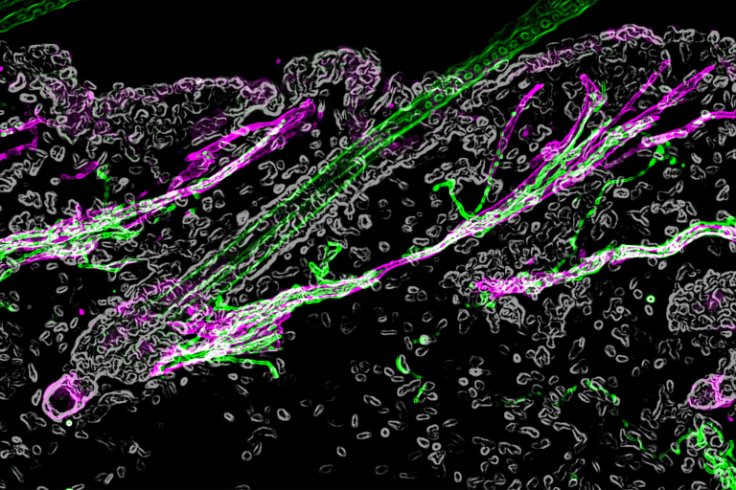If you've ever wondered why we get goosebumps, you're not alone. Even Charles Darwin mused about them in his writings on evolution. Goosebumps might protect animals with thick fur from the cold, but we humans don't seem to benefit from it much though it has been preserved during evolution all this time.
In a new study, Harvard scientists have discovered the reason behind goosebumps as the same behind hair growth. The found that cell types that cause goosebumps are also important for regulating the stem cells that regenerate the hair follicle and hair.

Underneath the skin, the muscle that contracts to create goosebumps actually bridges the sympathetic nerve's connection to hair follicle stem cells. They react to cold by contracting the muscle and causing goosebumps in the short term, while in the long run they activate stem cell for new hair growth.
Published in the journal Cell, these findings in mice give researchers clue to find how different cell types interact to link stem cell activity with changes in the outside environment."We have always been interested in understanding how stem cell behaviors are regulated by external stimuli," said Ya-Chieh Hsu, the Alvin and Esta Star Associate Professor of Stem Cell and Regenerative Biology, who led the study in collaboration with Professor Sung-Jan Lin of National Taiwan University.
"In this study, we identify an interesting dual-component niche that not only regulates the stem cells under steady state, but also modulates stem cell behaviors according to temperature changes outside," said Hsu.
A system for regulating hair growth
The sympathetic nerve that controls body homeostasis and our responses to external stimuli, also connects with a tiny muscle in the mesenchyme that in turn connects to hair follicle stem cells, which are critical for regenerating the hair follicle and even repairing wounds.
The connection between the sympathetic nerve and the muscle has been well known, since they are the cellular basis behind goosebumps. The cold environment outside triggers sympathetic neurons to send a signal, and the muscle reacts by contracting and causing the hair to stand on end.
When studied the skin under extremely high resolution using electron microscopy, the researchers found that the sympathetic nerve is associated with the muscle and also formed a direct connection to the hair follicle stem cells.
The nerve fibers wrapped around the hair follicle stem cells like a ribbon and when exposed to prolonged cold, the nerve was activated at a much higher level and more neurotransmitters were released, causing the stem cells to activate quickly, regenerate the hair follicle.
"We discovered that the signal comes from the developing hair follicle itself," said Yulia Shwartz, a postdoctoral fellow in the Hsu lab. "It's a two-layer response: goosebumps are a quick way to provide some sort of relief in the short term. But when the cold lasts, this becomes a nice mechanism for the stem cells to know it's maybe time to regenerate new hair coat."
Past Study
In an earlier study published in January 2020, Finnish researchers mapped neural activity as participants watched horror movies, and found that our brains are continuously anticipating and preparing us for action in response to the threat.
"Horror movies exploit this expertly to enhance our excitement," said researcher Matthew Hudson from the University of Turku, Finland. It was found that the creeping feeling occurs when one feels that something isn't quite right, and the instinctive response makes us jump out of our skin.
During those times when anxiety is slowly increasing, regions of the brain involved in visual and auditory perception become more active, as the need to attend for cues of threat in the environment become more important. "After a sudden shock, brain activity is more evident in regions involved in emotion processing, threat evaluation, and decision making, enabling a rapid response," said the researchers.









